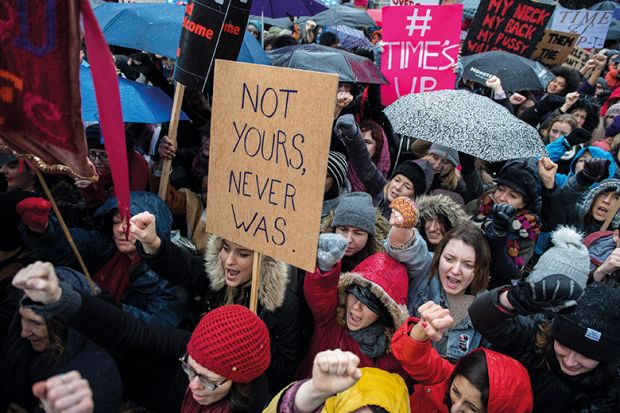Three-quarters of staff members in European universities have suffered some form of gender-based violence at work, but barely one in 10 victims reports it, according to a landmark study.
The data are the first release from the European Union-funded UniSAFE project, which attracted responses from 42,186 employees and students at 46 universities and research organisations spread across 15 countries, including France, Germany, Ireland, Italy, Spain and the UK. It used broad definitions to gather data missed from previous studies, which have tended to focus on sexual harassment and bullying only.
The results, published on 7 November, show that 62 per cent of respondents reported suffering from some form of gender-based violence since starting at their institution, encompassing physical violence, psychological violence such as abusive comments, sexual violence and sexual harassment – as well as online violence, such as cyberbullying, and “economic violence”, which covers behaviours such as harming someone’s work by restricting access to financial resources.
THE Campus resource: What does ‘taking sexual violence seriously’ look like at universities?
Seventy-three per cent of staff said they had been targeted, compared with 58 per cent of students. Although women were more likely to be victims – 66 per cent said they were – some 56 per cent of men said they had suffered, too.
“The sheer scale of what we are measuring is terrifying,” said Anne Laure Humbert, a survey author and director of the Centre for Diversity Policy Research and Practice at Oxford Brookes University. She said it was “horrendous” that 31 per cent of all respondents had experienced sexual harassment.
While psychological violence was most common, reported by 57 per cent of respondents, 6 per cent said they were victims of physical violence, and 3 per cent sexual violence. Ten per cent said their work or studies had been disrupted by economic violence, and 8 per cent reported online violence.
However, only 13 per cent of respondents who said they had experienced any form of gender-based violence had reported it. Being unsure if the behaviour was serious enough to report, whether it was violence, and who to tell were among the most common reasons for remaining quiet, but 12 per cent said they were concerned that their harasser would retaliate against them and 3 per cent said they had been discouraged from filing a complaint.
Of the staff who had experienced gender-based violence, 67 per cent said they felt dissatisfied with their job, almost double the figure for those who had not experienced it. Just over half of those affected said they were less productive, while about a third had disengaged from colleagues, taken time off or sought to switch teams.
Professor Humbert said the survey was the first of its kind to shed light on the intersectional impact of gender-based violence. Reporting of gender-based violence was higher among ethnic minority respondents (69 per cent versus 61 per cent for non-minorities), LGBTQ+ respondents (68 per cent versus 60 per cent for heterosexuals) and non-binary respondents (74 per cent).
Survey leader Anke Lipinsky, a senior researcher at the Leibniz Institute for the Social Sciences, said universities needed to do more to tackle gender-based violence.
“It’s clearly not enough to have a policy; you need to communicate it. A document on a shelf that is not used will not help to create a safe space,” she said.




